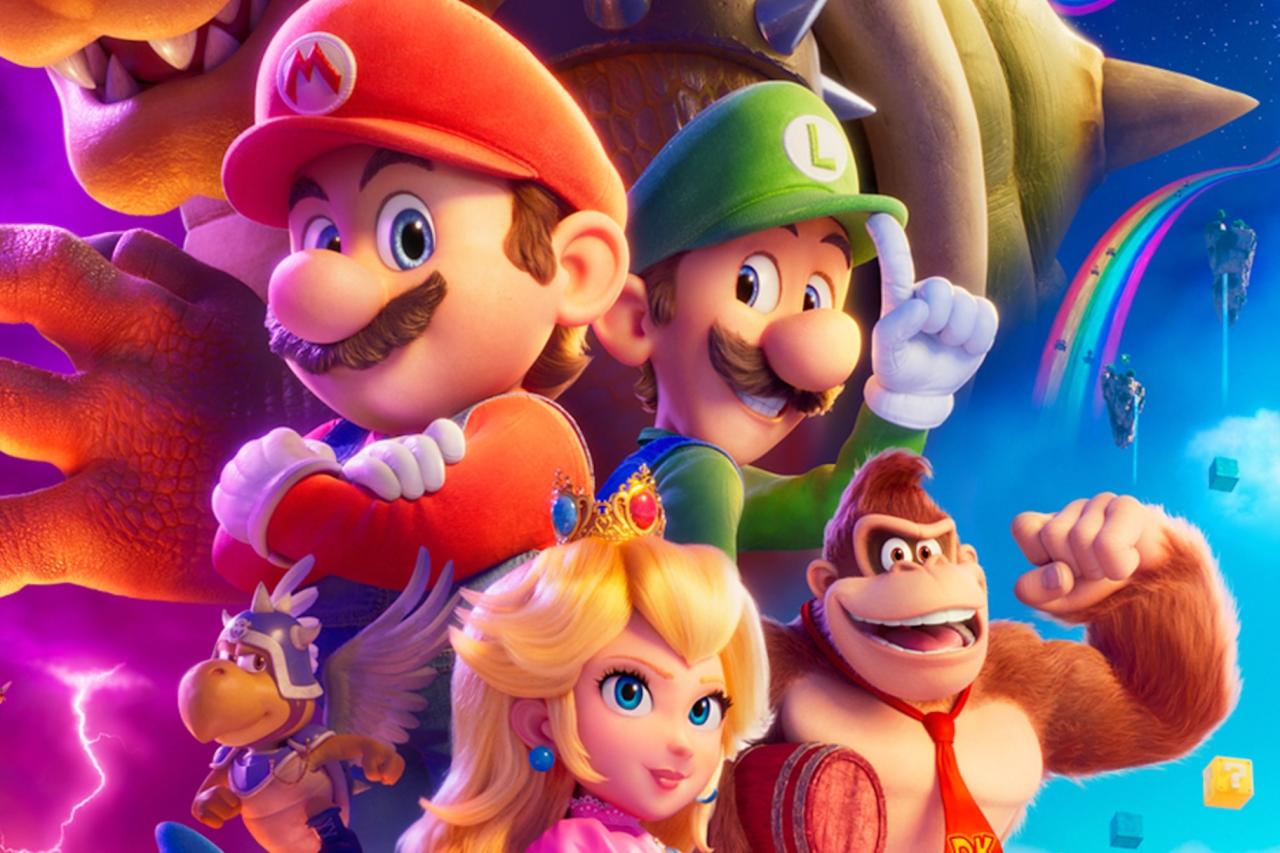Super Mario games have long been a cornerstone of the gaming world, captivating players with their imaginative universes and dynamic gameplay. This iconic franchise, originating from a humble 8-bit creation, has evolved into a multifaceted series that continues to engage both new and veteran gamers alike. From the innovative mechanics that define each installment to the memorable characters and rich storylines, Super Mario games represent a unique blend of creativity and entertainment.
As we delve into the essence of these beloved games, we will explore the core mechanics and features that set them apart, the evolution of character development across the series, and the profound impact these games have had on gaming culture and design conventions. Each title not only builds on the legacy of its predecessors but also shapes the future of gaming.
Game Mechanics and Features

The Super Mario franchise is renowned for its engaging gameplay, innovative mechanics, and charming aesthetics that have captivated audiences for decades. The core mechanics of these games have evolved while retaining the fundamental principles that define the series. Players navigate vibrant worlds, overcoming obstacles and enemies, with a variety of power-ups and abilities enhancing the gaming experience.
The core mechanics of Super Mario games revolve around platforming, exploration, and puzzle-solving. Players control Mario, or other characters like Luigi, Toad, and Princess Peach, as they traverse levels filled with challenges. The foundational mechanics include running, jumping, and using special abilities granted by power-ups, such as the Super Mushroom or Fire Flower. These elements create a dynamic gameplay loop that encourages players to master their skills while progressing through increasingly complex levels.
Unique Features Across Different Titles
Each Super Mario title introduces unique features and gameplay elements that distinguish it within the series. These innovations often reflect the evolving technology and design philosophies of their respective eras.
– Super Mario Bros. (1985): The introduction of power-ups, the concept of warp zones, and the use of 2D side-scrolling gameplay established the franchise’s foundational mechanics.
– Super Mario 64 (1996): This title revolutionized 3D platforming by introducing an open-world design, allowing players to explore vast environments and complete objectives in non-linear ways. The use of a new control scheme with analog sticks provided greater precision in movement.
– Super Mario Galaxy (2007): This installment incorporated spherical gravity mechanics, where players could walk around planets, adding a unique twist to traditional platforming. The game also emphasized the use of gravity to solve puzzles and navigate levels.
– Super Mario Odyssey (2017): The introduction of Cappy, a sentient hat that allows Mario to possess enemies and objects, created fresh gameplay dynamics. The open-world structure encouraged exploration and experimentation in diverse kingdoms.
Evolution of Gameplay Elements
The Super Mario series showcases a significant evolution in gameplay elements over the years. This progression reflects advancements in technology, player expectations, and creative design.
– Graphics and Aesthetics: From the pixelated 2D graphics of the original title to the lush, colorful 3D visuals of modern games, each iteration has pushed the boundaries of graphical fidelity while maintaining a whimsical aesthetic.
– Level Design: The progression from linear levels in earlier titles to intricate, multi-layered designs in later games highlights the series’ adaptability. Recent titles often feature open-ended levels that offer multiple pathways and secrets.
– Power-Ups and Abilities: The variety of power-ups has expanded significantly, with each new game introducing innovative abilities that add depth to the gameplay. For instance, the introduction of the Super Bell in Super Mario 3D World allows players to climb walls and attack enemies in new ways.
– Multiplayer Features: Recent titles have incorporated multiplayer mechanics, allowing friends to join in on the fun. For example, Super Mario 3D World allows cooperative play, enabling players to work together to complete levels.
The evolution of game mechanics and features in the Super Mario franchise reflects a commitment to innovation while honoring the core principles that have made these games beloved by fans worldwide. Each new title not only revisits classic elements but also introduces fresh ideas that keep the experience exciting and relevant.
Character Development and Storylines

The Super Mario franchise is not only renowned for its innovative gameplay and enchanting worlds but also for its rich character development and intricate storylines. Central to these narratives are iconic characters that have evolved significantly since their inception. Analyzing these characters reveals how their roles and story arcs have transformed throughout the years, contributing to the franchise’s enduring appeal.
The main characters in the Super Mario series include Mario, Luigi, Princess Peach, Bowser, and several others, each fulfilling specific roles that drive the storyline. Mario, the hero and protagonist, is often depicted as a courageous plumber on a mission to save Princess Peach from the villainous Bowser. Luigi, often seen as Mario’s sidekick, provides a complementary dynamic, showcasing his own unique personality traits. Princess Peach is not just a damsel in distress; she often plays a pivotal role in the story, demonstrating strength and resilience. Bowser, the primary antagonist, has been portrayed with varying degrees of depth, evolving from a straightforward villain to a complex character with his own motives.
Main Characters and Their Roles
Understanding the roles of key characters within the Super Mario franchise enhances the appreciation of the overarching narrative. Each character contributes uniquely to the gameplay experience and story progression, as Artikeld below:
- Mario: The fearless hero who battles against Bowser and his minions to rescue Princess Peach, showcasing bravery and determination.
- Luigi: Mario’s younger brother who often joins him on adventures, representing loyalty and support, while also having his own distinct traits.
- Princess Peach: More than just a captive, she has been portrayed in various games as an active participant with her own abilities, showcasing her significance beyond being a mere objective.
- Bowser: The king of the Koopas, he often embodies the classic villain archetype but has been explored in different narratives, sometimes portraying a more humorous or misunderstood character.
Story Arcs in Various Mario Franchises
The story arcs in Super Mario games have often revolved around the classic motif of good versus evil, with Mario striving to save the kingdom and its princess. However, the depth of storytelling has expanded significantly over the years. For instance, the “Super Mario Galaxy” series introduced cosmic themes and complex plotlines, where Mario not only traverses different worlds but also encounters characters with rich backstories and motivations.
Another notable example is “Super Mario Odyssey,” which presents a narrative that allows players to explore various kingdoms, each with its unique culture and story. The game showcases Mario’s quest to rescue Princess Peach from Bowser, but also emphasizes the importance of friendship and collaboration with characters like Cappy, a sentient hat with its own story arc.
“The evolution of Mario’s character and storylines reflects the changing landscape of video games, offering richer narratives and more engaging character development.”
Character Evolution from Original Games to Modern Titles
The evolution of characters in the Super Mario franchise illustrates a shift from simplistic archetypes to more nuanced representations. In early titles like “Super Mario Bros.,” characters were defined primarily by their roles in the gameplay. Mario was simply a plumber on a quest, while Princess Peach was the archetypical damsel in distress.
As the franchise progressed, characters began to exhibit more defined personalities and backstories. In “Super Mario 64,” Mario’s design and movements became more expressive, showcasing his character’s agility and charm. The introduction of new characters such as Wario and Yoshi added layers to the narrative, presenting alternate perspectives and motivations.
Modern titles continue this trend, with games like “Super Mario Maker” allowing players to engage with the narrative in creative ways, further deepening character relationships and the overall lore of the franchise. Each installment offers a fresh take on familiar roles, enhancing the appeal of the characters and enriching the story arcs.
Through the years, the Super Mario franchise remains a testament to effective character development and storytelling, creating a beloved legacy that resonates with fans of all ages.
Impact on Gaming Culture
The Super Mario franchise has undeniably shaped the landscape of video gaming since its inception in the 1980s. With its innovative designs, engaging gameplay mechanics, and cultural significance, Super Mario has not only influenced countless game developers but also redefined the gaming experience for players around the globe. Its impact on the gaming industry transcends mere entertainment; it has established conventions and norms that are still followed today.
One of the most significant ways Super Mario has influenced the gaming industry is through its innovative design conventions that prioritize accessibility and engagement. The series introduced several game design elements that have become staples in the industry, breaking new ground in how games are created and played.
Game Design Conventions Established by Super Mario
The Super Mario series has introduced numerous game design conventions that have been adopted widely across various genres. These conventions enhance player experience and encourage engagement, which has led to their permanence in gaming culture. The following points illustrate the crucial elements established by the Super Mario franchise:
- Platforming Mechanics: The combination of jumping and running mechanics pioneered in Super Mario Bros. not only defined the platformer genre but also established the foundation for future side-scrolling games.
- Power-Ups and Items: The inclusion of power-ups like the Super Mushroom and Fire Flower introduced gameplay variability, encouraging exploration and experimentation within levels.
- Level Design: Mario games often feature multi-layered level designs that encourage exploration and reward players with hidden secrets, a practice that has become common in many game genres.
- Character Abilities: Each character’s unique abilities encourage different playstyles, influencing the design of multiplayer games where player choice becomes integral to gameplay.
The Super Mario franchise has not only set benchmarks in game design but has also contributed to the cultural significance of gaming as a whole. Mario himself has transcended the confines of gaming and has become an enduring symbol of the medium.
Cultural Significance of Mario as a Gaming Icon, Super mario games
Mario’s cultural significance extends beyond the realm of video games; he represents a pivotal chapter in the history of digital entertainment. He has become synonymous with gaming, exemplifying the joy and creativity that video games can offer. Significant points include:
- Brand Recognition: Mario is one of the most recognizable characters in the world, embodying the playful spirit of gaming and serving as a mascot for Nintendo’s brand identity.
- Cross-Media Influence: Mario has appeared in television shows, movies, and merchandise, contributing to the cultural footprint of video games in mainstream media.
- Generational Appeal: Mario appeals to a wide demographic, attracting both new players and nostalgic fans who grew up with the franchise, thereby bridging generational gaps in gaming.
- Impact on Game Development: The success of Mario games has inspired countless developers to create innovative and engaging games, fostering a culture of creativity and experimentation in the gaming industry.
Through its innovative mechanics and cultural resonance, the Super Mario series has left an indelible mark on gaming culture, shaping not only the industry but also the experiences of millions of players worldwide.
Epilogue: Super Mario Games

In summary, the journey through Super Mario games reveals not just a series of successful titles, but a significant chapter in the history of gaming. The intricate game mechanics, character development, and cultural impact together illustrate why Super Mario remains a beloved icon. As the franchise continues to innovate and inspire, it undoubtedly will keep enchanting players for generations to come.
